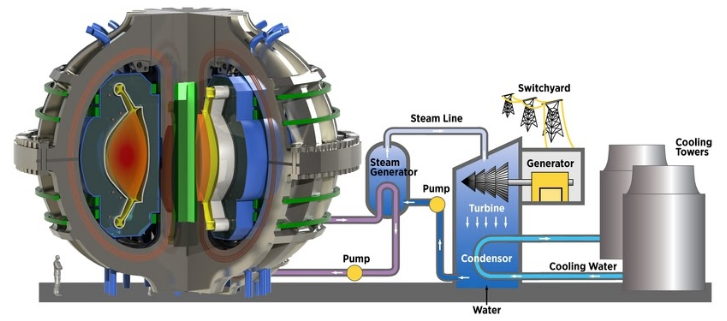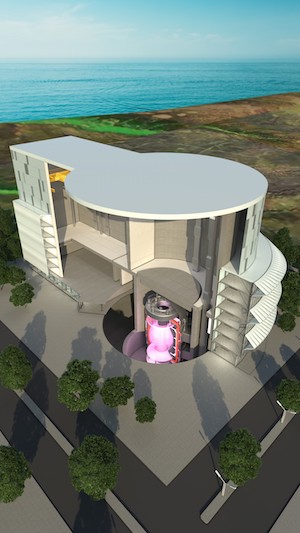World Leading Fusion Technology
STEP is a prototype design for a commercial fusion power plant that will ultimately generate electricity from fusion energy. Key to its potential success is the spherical tokamak design which has been spearheaded by the UK Atomic Energy Authority.
Over the coming years the STEP programme will develop and identify solutions to the challenges of delivering fusion energy in the real world, benefiting from UKAEA's breadth of knowledge and expertise and its suite of research facilities – RACE for Robotics, Materials Research Facility, H3AT Tritium research and Fusion Technology Facilities.
How would STEP work?
STEP would work by creating a fusion reaction within its core using powerful magnetic fields and heating gas to create a plasma, within which a fusion reaction occurs.
Like most existing power stations, heat harvested from the fusion reaction will then be used to power generators via steam turbines which would ultimately generate electricity.
In addition to the main heat and power conversion processes, there are a number of other important aspects of fusion power plants, including controlling electromagnets that create magnetic field which confine the plasma, cryogenic and other cooling systems and vacuum containment to create the environment inside the reactor to allow the fusion process to take place.

How has it been Developed?
Experts at UKAEA have focused research on the development of the compact spherical tokomak (ST) for a number of decades, starting with the Small Tight Aspect Ratio Tokamak (START), following on with the Mega Ampere Spherical Tokamak (MAST) which has later been upgraded to MAST-U. There is a further upgrade on MAST resulting in MAST-U Enhancement (MAST-UE). There are a number of key challenges in the development of a compact spherical design that have been overcome and UKAEA believe that this technology can form the basis of a design for a UK power plant - STEP.
With a diameter of 10m, it will be significantly more compact than other research fusion reactors around the world, including ITER (the global fusion research collaboration megaproject) and DEMO (a similar proposed prototype fusion power plant), both of which UKAEA are also supporting.
Due to the compact nature of the British design, UKAEA believes STEP could be cheaper and easier to build than other tokomak versions and could help the UK become a world leader in the commercial realisation of the technology in the coming decades.
STEP would be a key link in taking crucial technology research such as MAST-U and turning it into reality, with the construction of an at-scale prototype power plant. Research is ongoing, and a STEP concept design phase is currently running until 2024, funded by £220million from UK Government.
To learn more about STEP's exciting research, visit UKAEA here - https://ccfe.ukaea.uk/research/step/

